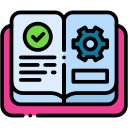Build a Remote Onboarding Blueprint That Actually Works
Ship equipment early, send a warm welcome video, simplify paperwork with e-signature, and give access to a sandbox environment. One global team reported anxiety dipped after a three‑minute Loom from leadership named expectations and invited questions. What would your message say?
Build a Remote Onboarding Blueprint That Actually Works
Outline a two-hour runway: quick tech check, manager welcome, team hello, and a small, achievable task. End with a buddy coffee. We’ve seen first-day micro-wins spark confidence that compounds through week one. What’s your favorite starter task?
Build a Remote Onboarding Blueprint That Actually Works
Define learning milestones, relationship goals, and business outcomes for each phase. Co-create the plan with the new hire to build ownership. Add checkpoints tied to real deliverables. Share your favorite 30‑60‑90 template, and we’ll feature standout examples in upcoming posts.







